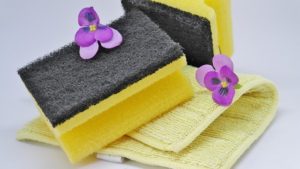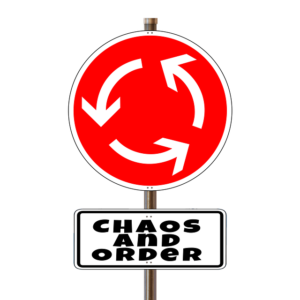by Jayme Radomski | Apr 17, 2018 | Cleaning, Clutter
 Spring cleaning for some is a chore for others a joy. However, the result of a thoroughly cleaned home brings lightness and freedom to everyone.
Spring cleaning for some is a chore for others a joy. However, the result of a thoroughly cleaned home brings lightness and freedom to everyone.
Spring cleaning items:
- Strip the beds down to the mattress and wash all linens.
- Clean the frames and headboards of beds.
- Moved and empty furniture and wash baseboards.
- Clean ceiling fans.
- Empty china cabinets and give them a good cleaning.
- Empty every inch of each closet and inventory, value assess, wash and clean surfaces, and organize clothes in a useful and efficient way.
Effectively spring cleaning means no corner is left untouched by brooms, dusters, scrub brushes, rags and other cleaning weapons.
The task of spring cleaning is big. But, if you break it down into daily tasks, your home can be fresh, clean and organized before the kids get out of school. Although I’m personally not a cleaning expert, I do love a clean house. For some great cleaning resources check out cleanmama.net, and their free printable’s like their spring cleaning checklist.
You will feel a change of energy in your home and in your self after a day of thorough de-cluttering and cleaning. Your home will feel lighter, brighter and more cheerful.
The best part of de-cluttering and organizing for me is hearing my clients describe similar feelings of lightness and freedom after a session together. Whether organizing a home or office, de-cluttering can be a cathartic passing of the old and the start of a whole new season in life.
What are your plans this spring?
Is a cluttered room or desk stopping you from enjoying your home or office the way you’d like to enjoy it? Have your dust bunnies proliferated beyond a reasonable limit? Do you find spring-cleaning to be a daunting task of Olympian magnitude? Has it never even occurred to you that a good spring-cleaning would be appropriate at the office?
If organizing and cleaning is overwhelming, a professional organizer can help. See if Top Shelf Home Organizing can help you on your journey. Contact Jayme to schedule a consult or chat about organizing.
by Jayme Radomski | Jan 17, 2018 | Clutter, Mindfulness, Nesting, Productivity
 Do you walk in the house after a long day at work and just sigh at your cluttered house? Have you planned to organize one morning but just did not know where to start or were just not in the mood?
Do you walk in the house after a long day at work and just sigh at your cluttered house? Have you planned to organize one morning but just did not know where to start or were just not in the mood?
Are you caught in a vicious cycle: as soon as you organize one room another one has turned to chaos? Maybe you just need to prioritize, find motivation, and ask for help. Easier said than done?
Here is how to get started:
Prioritize
As with most goals in life, you want to strive for progress and improvement, not perfection. Most of us do not have time to achieve perfection in everything we do and still live a happy, fulfilling life. When you set goals, make them achievable, attainable. When you make that progress, create a visual way to track it or remind yourself of all you have accomplished. Since we will never have more than 24 hours in a day, we may have to say “no” to some activities and tasks.
As you list each goal, task, or activity, ask yourself if it is necessary, if it supports your ultimate goals, or if any other activity or person will be negatively affected if it does not happen. You may see your list shrink before your very eyes. If you are not sure how to narrow your list, search the internet, ask a friend, or consult a professional organizer (we help with both the tangible and intangible).
Motivate
Do you start the day with the best of intentions to declutter the bathroom only to lose your drive because it is “just not worth it?” What is worth it to you? What do you value? Why? These questions may not seem to have much to do with organizing, but they can be the key to your motivation. How much time do you spend on activities that relate to your values? Most of us would probably answer “not enough.” Then why would you ever spend time on an activity not related to your values, such as organizing?
The answer: organizing allows you to focus more on your values. Organizing means less time searching for the other shoe, fewer arguments over who last used the scissors and did not put them back, less time cleaning around the clutter. With less time wasted, you have more time to be with family, exercise, eat healthy, and pursue those life goals that really matter. The next time you wonder why you would ever make time to organize, remember that organizing can be a means to an end. If you find a task that seems pointless, ask yourself how that task can bring you closer to what means the most to you. It is amazing how a change in attitude and knowing what is in it for you can motivate.
Ask for Help
Even if most of your chores and daily tasks are “value added”, they are not always fun and often too much for one person. Solution: spread the responsibility among the whole household. What is boring to one person may be fun for another. One person’s weak spot may be another person’s strength. Some people have time in the morning to help everyone get ready for the day, and others have more time at night to help everyone get ready for bed. When you do ask for help, just remember to be specific or be prepared for the help to be not exactly what you expected. Letting others pick what they want and find their own way, within reason, may even make them more willing and productive.
If organizing is overwhelming, a professional organizer can help. See if Top Shelf Home Organizing can help you on your journey. Contact Jayme to schedule a consult or chat about organizing.
by Jayme Radomski | Nov 14, 2017 | Clutter
Getting organized and being organized is a dream that can come true! However, an organizing journey will be most successful if you have a plan. Write down your organizing goals. Dream big and don’t hold back. Share these goals and dreams with someone to help empower you to get started. Use these tips to help with your plan and to launch you forward on your organizing journey.
Deciding Which Area of Your Home to Organize First
Deciding where to start is challenging when you have many areas of your home that need to be organized. Having a plan as to which areas you will work through first and last will help you stay focused.
Here are Some Ideas on Where to Start:
- Top Down or Bottom Up
Starting with the top of your home (or bottom) is a logical way to work through your home, organizing area by area. Start in your attic. Then work through bedrooms, bedroom closets, linen closets and bathrooms. Next work through your living room, dining room, kitchen, playroom and home office. Then the final areas would be your basement, garage, storage unit and yard.
- Inside Out
Starting with the inside of you home is another strategy. With this process, you work through all your closets and your pantry first. The next areas are the attic, basement and garage. The last areas would be bedrooms, kitchen, home office, and then living rooms and dining room.
- Areas You See Everyday
Organizing the areas of your home you see first everyday will have immediate impact and encourage you to meet your goals for other areas of your home. Areas you see everyday include your bedroom, your bathroom, your closet, kitchen and office. Choose the area with the largest impact and work through that area to completion. Enjoy the results before moving to the next.
- Areas You Do Not See Everyday
Organizing areas that you do not see everyday can be beneficial. If the organizing process will bother other family members or take an extended amount of time due to your schedule or the size and condition of the space, you may want to start with areas you do not see everyday. Working in a basement, storage area or attic where you can close a door during the process will help reduce stress for you and your family if the thought of organizing and removing unneeded items brings anxiety.
Once you have a plan of how you will work through your house, set organizing goals for each area of your home and write them down.
Where to Start with Organizing Items
You can also divide your organizing project into item categories of what you will organize first, this will bring structure to your journey. Also, write down all the items you want organized in your home to provide guidance and keep you on track.
Here are Some Ideas on How to Organize by Categorizing Your Items:
- Start Easy
Start with items that are easy to organize. These items will have obvious categories and obvious places to be stored. Items easier to organize include clothing, linens, pantry items and toys. Once the easy items are managed, move on to more difficult categories such as paperwork, kitchen items, garage items and many items typically stored in the basement. More difficult items would be saved for last, when the rest your home is organized. These items include photos, old paperwork, mementos and items that have been in storage for a long time.
- Items You Use Everyday
If you organize the items you use every day first, it will motivate you to continue to organize the rest of your home. Starting here will give you immediate gratification as you see and use these items everyday. This items include your clothing, your toiletries and your kitchen items. This area may also include items on your desk and paperwork.
- Items You Do Not Use
Organize items you do not use frequently first, this way you can free up space and energy for the items that you use frequently. Going through the items that you do not use frequently and purging the unnecessary is a good place to start if getting organized will bother other family members. They will notice a tidy space before questioning what you did with the items. These items may include tools, mementos, items from past hobbies and projects, and seasonal items.
Save the Difficult Items and Areas for Last
Start with an easy area or item. This will build motivation to continue organizing your home. Difficult items and areas include photos, mementos, basements, attics and storage units. Your family is likely to help in these areas after they see the results and enjoy the benefit of all the other organized areas of your home.
Getting organizing is a journey. Start with small projects and enjoy the results. A professional organizer can help you along the way. See if Top Shelf Home Organizing can help you on your journey. Contact Jayme to schedule a consult or chat about organizing.
 Spring cleaning for some is a chore for others a joy. However, the result of a thoroughly cleaned home brings lightness and freedom to everyone.
Spring cleaning for some is a chore for others a joy. However, the result of a thoroughly cleaned home brings lightness and freedom to everyone.

